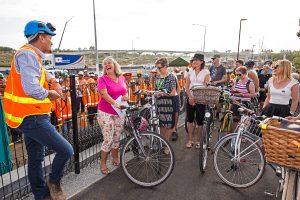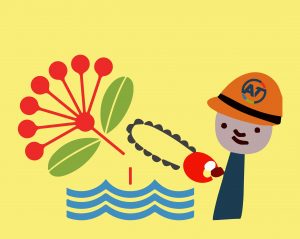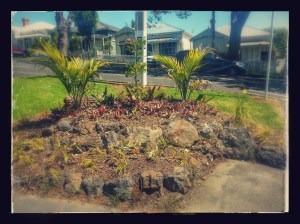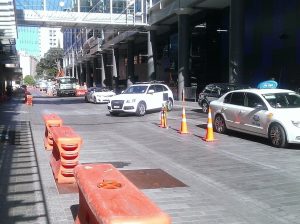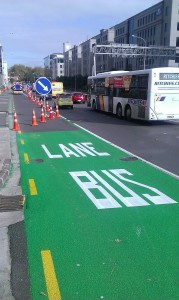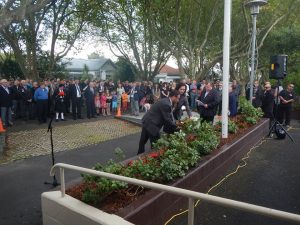 Since I was first elected in 2010 I have taken a keen interest in the topic of parking. I advocated for the removal of parking minimums in the Auckland Unitary Plan and initiated a Getting Parking Right for Auckland seminar targeted at business associations in 2013. I’m convinced by the substantial body of evidence that reveals the rich rewards available to cities that get parking management* right. Parking is one of the biggest levers available to local government and has system-wide implications. It is also a topic which provokes emotive headlines that politicians find hard to ignore, heated public meetings, and many complaints from constituents.
Since I was first elected in 2010 I have taken a keen interest in the topic of parking. I advocated for the removal of parking minimums in the Auckland Unitary Plan and initiated a Getting Parking Right for Auckland seminar targeted at business associations in 2013. I’m convinced by the substantial body of evidence that reveals the rich rewards available to cities that get parking management* right. Parking is one of the biggest levers available to local government and has system-wide implications. It is also a topic which provokes emotive headlines that politicians find hard to ignore, heated public meetings, and many complaints from constituents.
At the Planning Committee on 4 November we considered the objectives and principles, as recommended as a package by the Auckland Transport Board, that will form the strategic direction underpinning the development of the 2022 Parking Strategy.
Here is a fleshed out version of the points I made at the meeting in support of the recommendation. Greater Auckland has also reported on the meeting here.
The opportunity

I started by thanking the Auckland Transport Board for doing the ground work ahead of the council committee meeting. We were only being asked to endorse the AT Board’s recommended strategic direction so that a parking discussion document can be prepared. We were not signing off on the removal of parking or a final version of the strategy. We are only at the starting point of consultation to inform a refresh of the existing 2015 Parking Strategy.
 If we get the strategy right, parking management can be a key lever to reduce our carbon emissions, increase mode shift and encourage active transport, improve safety, reduce transport inequity and reduce congestion across the network. We will have the right size tools to respond to growth and increasing intensification. It will be good for business and good for Auckland.
If we get the strategy right, parking management can be a key lever to reduce our carbon emissions, increase mode shift and encourage active transport, improve safety, reduce transport inequity and reduce congestion across the network. We will have the right size tools to respond to growth and increasing intensification. It will be good for business and good for Auckland.
“War on cars”

Our shared spaces, footpaths and public squares are increasingly filling up with parked cars. Illegal parking is going unchecked on our grass verges and on busy arterials. Driving is heavily subsidised and drivers have become used to the idea that parking in the public realm is largely “free”. There are NO signs that Auckland Transport is anywhere close to waging a “war on cars”. The cars in Auckland are doing just fine and driving is fully supported as a major part of the transport system.

In fact, rather than an attack on cars, an effective parking strategy, as proposed by the AT Board, is pro-driving. It will reduce congestion and improve connectivity and access to the places drivers want to go. It is pro-communities, pro-equity, pro-children , pro-city building and good urban design. It is also positive for the 30% of Aucklanders who don’t drive at all and those needing space for access (whatever the mode and personal ability).
It’s a “radical plan”
 The parking strategy report that came to the Planning Committee grabbed headlines as a “radical plan to remove parking on many of the city’s roads to make way for more bus lanes and cycleways” (NZ Herald, 2 November 2021 )
The parking strategy report that came to the Planning Committee grabbed headlines as a “radical plan to remove parking on many of the city’s roads to make way for more bus lanes and cycleways” (NZ Herald, 2 November 2021 )
The current Parking Strategy 2015 was arguably “radical” for Auckland or at least progressive for its time. The strategy provides for parking to be de-prioritised and for road space to be allocated in favour of active transport, PT, and the movement of people and freight. What is being proposed now is not new or “radical” but a refresh of the existing strategy to give AT a clear mandate to implement the very parking management tools AT already has available.
If anything it is “radical” to NOT effectively manage parking to achieve Auckland’s strategic objectives. It is “radical” to give away a valuable resource for free.
It is also not “radical” to take a decade to implement the strategy, as proposed by AT, when many of the parking management tools have already been in place for over 6 years.
Bringing the community along
One of the reasons given by AT for the need to refresh the 2015 Parking Strategy is to provide a “new community mandate”, to “reset expectations” and “set out the need for change”. The report notes that “Our community’s receptiveness to change is diverse. The approach to public engagement will aim to take our communities with us through the changes arising from the parking strategy”.
There are many examples of how the community has already been brought along as a result of the current strategy and in response to a growing city.
Drivers are enjoying the benefits where parking has been removed on key arterials to speed up their trips. It is not necessary to undertake expensive road widening if space is re-allocated from parked cars such as proposed for Great North Road. AT’s Future Connect enables Aucklanders to understand the long-term network plans and where parking is likely to be removed in the future.
Many residents were outraged when the first residential parking scheme was trialed in St Marys Bay almost a decade ago to cope with the influx of all day commuter parking. That scheme proved extremely successful and has served as the template for a city-wide roll out.
It has been well signaled since 2015 that residents of new apartments will not be eligible for residential parking permits. In the city centre and central suburbs there is no longer an expectation that vehicle storage will automatically be available on public roads for free.
 Business Associations were once very skeptical about the benefits of paid parking have been won over by the results. It is good for business to use demand responsive pricing to encourage turn over and to allow customers to purchase the parking they need. There’s is a heap of evidence from NZ and across the world to share with businesses about the economic opportunities of re-allocating road space to PT, active modes and extended footpaths. (for example the success of the Karangahape Road street upgrade).
Business Associations were once very skeptical about the benefits of paid parking have been won over by the results. It is good for business to use demand responsive pricing to encourage turn over and to allow customers to purchase the parking they need. There’s is a heap of evidence from NZ and across the world to share with businesses about the economic opportunities of re-allocating road space to PT, active modes and extended footpaths. (for example the success of the Karangahape Road street upgrade).
Commuters who once used the residential streets of Ponsonby, Grey Lynn and Freemans Bay to “park and hide” have discovered the expansion of PT services such as the new bus service to Ponsonby Rd from Kingsland station and the competitive price of PT once parking is no longer “free”. Commuters on Waiheke are used to paying for parking at Matiatia implemented to manage the demand. The same approach at all of Auckland’s crowded park and rides located next to frequent PT and served by feeder services will benefit all commuters (*once commuting returns to pre-covid levels of course).
Its all coming too fast
 In the debate committee members raised concerns that with the NPS- UD allowing increasing intensification (with no parking minimums) this is not the time to push ahead with the parking strategy. That we are “making life hard” and “creating a situation”
In the debate committee members raised concerns that with the NPS- UD allowing increasing intensification (with no parking minimums) this is not the time to push ahead with the parking strategy. That we are “making life hard” and “creating a situation”
The NPS-UD is the reason more than ever to push ahead with implementing the parking strategy. Intensification is coming whether we like it or not and we have to proactively plan now how we use the public realm to the benefit of all Aucklanders. There needs to be a really clear signal to the market that car storage has to be factored into any decision making when purchasing or renting a home. On-road parking can no longer be advertised as guaranteed “free parking”. As the report states “Roads are critical assets and valuable public space. They serve a range of purposes, principally movement and places, and they need to cater for all modes, rather than just prioritising cars. The way in which road space is allocated is critical as it should be used, and useable, for all Aucklanders, regardless of their travel choices.”
It is difficult for those caught in the transition. It is a transition that has been happening for over 3 decades. It was a transition for residents who moved into the city centre during Auckland’s first apartment explosion in the 90’s expecting to park for free on-street. It has happened for commuters who accepted a job presuming all central residential streets would remain “free” . It has been a transition for residents living on key arterial roads like St Lukes or Manukau Road who can no longer park on street.
During the debate I also mentioned that part of the transition will be encouraging residents to use their off-street garage space for parking rather than the storage of stuff (85 % of houses are estimated to have off-street parking available). Councillors for Manurewa-Papakura Newman and Dalton were right to point that many garages are actually homes.
We don’t solve Auckland’s housing, congestion and inequity issues by pushing out the implementation of the strategy. We don’t help drivers or improve PT by clogging up arterials with parking. We don’t serve our communities by hiding how much parking is subsidised or by accepting a poor return on valuable assets (AT was unable to provide information on parking subsidies or the net parking revenue but from the report it appears to be very low rate of return compared to other cities)
We have to provide the right incentives, services, facilities, information and support to Aucklanders as we transition to a low carbon transport system and an intensified city. Importantly it will all happen with public consultation.
One of my constituients wrote to me with “Any councillor who supports AT’s latest madness is equally mad”. To the contrary, I think it is the AT Board members and Committee members who supported the strategic direction who are completely sane to make evidence based decisions and to embrace a parking strategy that is Good for Auckland.
*Note
“Parking management” is used to refer to the range of tools available to manage parking such as paid parking, park and ride services, residential parking schemes, enforcement, removal of parking on arterials etc
Further reading
The hidden climate costs of America’s free parking space The Guardian, 5 November 2021
Parking kills businesses, not bikes or buses Newsroom 5 November 2021
Climate change: Auckland’s puzzling political parking own-goal Stuff 9 November
Karangahape Road records retail high before bracing for lockdown Our Auckland 7 September




